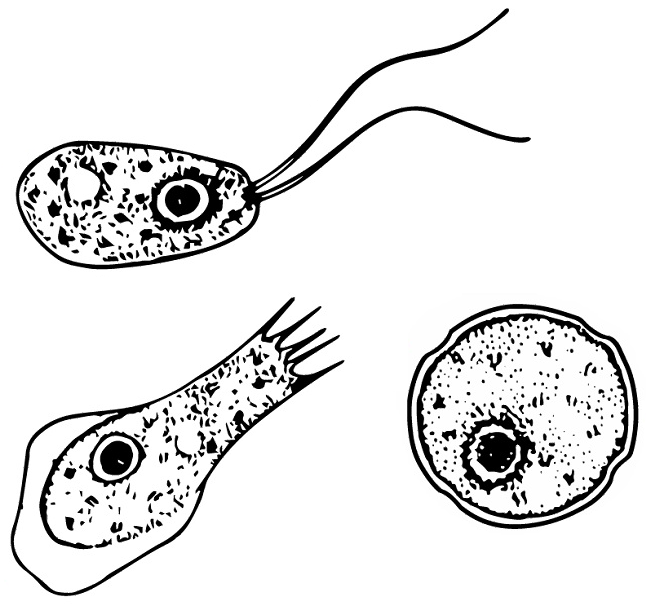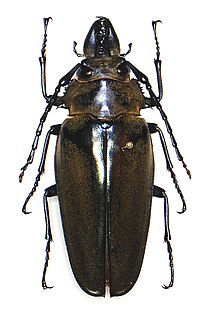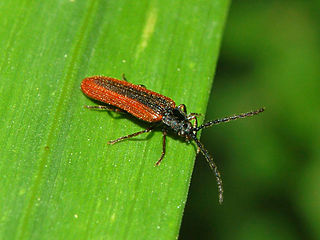
The Percolozoa are a group of colourless, non-photosynthetic excavates, including many that can transform between amoeboid, flagellate, and cyst stages.

James Charles Moeser is a musician and university administrator who served as the ninth chancellor of the University of North Carolina at Chapel Hill. He is a trained concert organist. A native of Colorado City, Texas, Moeser earned bachelor's and master's degrees in music from the University of Texas at Austin and a doctorate from the University of Michigan.
The insect family Corduliidae contains the emerald dragonflies or green-eyed skimmers. These dragonflies are usually black or dark brown with areas of metallic green or yellow, and most of them have large, emerald-green eyes. The larvae are black, hairy-looking, and usually semiaquatic. Members of this family include the baskettails, emeralds, river cruisers, sundragons, shadowdragons, and boghaunters. They are not uncommon and are found nearly worldwide, but some individual species are quite rare. Hine's emerald dragonfly, for example, is an endangered species in the United States.

Tube-dwelling anemones or ceriantharians look very similar to sea anemones but belong to an entirely different subclass of anthozoans. They are solitary, living buried in soft sediments. Tube anemones live inside and can withdraw into tubes, which are composed of a fibrous material made from secreted mucus and threads of nematocyst-like organelles known as ptychocysts. Ceriantharians were formerly classified in the taxon Ceriantipatharia along with the black corals but have since been moved to their own subclass, Ceriantharia.

Regnellidium is a monotypic genus of ferns of family Marsileaceae.

Ochyroceratidae is a six-eyed spider family, with 165 described species in ten genera. They are common inhabitants of caves and the tropical forest litter of South Africa, the Caribbean, Asia and South America. Considered an ecological counterpart of the Linyphiidae of the northern temperate zone, species are especially diverse in the Indo-Pacific region.

Eupterotidae is a family of insects in the order Lepidoptera with more than 300 described species.
Syringogaster is a genus of small ant-mimicking flies with a petiolate abdomen, a long prothorax, a swollen and spiny hind femur, and reduced head size and large eyes. There are 20 described extant species and two species known from Miocene amber from the Dominican Republic. It is the only genus in the family Syringogastridae.
Ronald Moeser was a municipal politician in Ontario, Canada. He was a councillor for Ward 44 in Scarborough from 1988 to 1997 and then a councillor for the amalgamated city of Toronto from 1998 to 2003 and then 2006 until his death in 2017.
Vellereophyton is a genus of flowering plants in the sunflower family.
- Vellereophyton dealbatum(Thunb.) Hilliard & B.L.Burtt - Australia
- Vellereophyton felinumHilliard - South Africa
- Vellereophyton gracillimumHilliard - South Africa
- Vellereophyton lasianthum(Schltr. & Moeser) Hilliard - South Africa
- Vellereophyton niveumHilliard - South Africa
- Vellereophyton pulvinatumHilliard - South Africa
- Vellereophyton vellereum(R.A.Dyer) Hilliard - South Africa

Jacobsoniidae is a family of beetles. The larvae and adults live under bark, in plant litter, fungi, bat guano and rotten wood. It is a small family with 23 described species in three genera:

The Trictenotomidae are a family of beetles in the large suborder Polyphaga containing 13 species in two genera:
Darktown was an African-American neighborhood in Atlanta, Georgia. It stretched from Peachtree Street and Collins Street, past Butler Ave. to Jackson Street. It referred to the blocks above Auburn Avenue in what is now Downtown Atlanta and the Sweet Auburn neighborhood. Darktown was characterized in the 1930s as a "hell-hole of squalor, degradation, sickness, crime and misery".

Omalisidae are a very small family of beetles within the superfamily Elateroidea. Members of this beetle family have bioluminescent organs on the larvae. The most recent evidence indicates they are the sister group to a clade comprising the families Rhagophthalmidae and Phengodidae.
Möser or Moeser is a German name. Notable people with the surname include:
Copelatus gardineri is a species of diving beetle. It is part of the genus Copelatus of the subfamily Copelatinae and the family Dytiscidae. It was described by Hugh Scott in 1912.

Copelatus pandanorum is a species of diving beetle. It is part of the genus Copelatus of the subfamily Copelatinae and the family Dytiscidae. It was described by Hugh Scott in 1912.
The Yacovelli v. Moeser case was a result of a summer reading program for new students implemented by the University of North Carolina at Chapel Hill in 2002 that was objected to by several groups and was referred to by the media as the UNC-Qur'an Controversy.
Duanne Moeser is a Canadian-German former professional ice hockey player. He is currently the sports manager for the Augsburger Panther of the Deutsche Eishockey Liga (DEL). He is a member of the German ice hockey hall of fame.

The Stenomatinae are a subfamily of small moths in the family Depressariidae.












